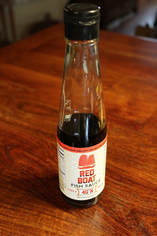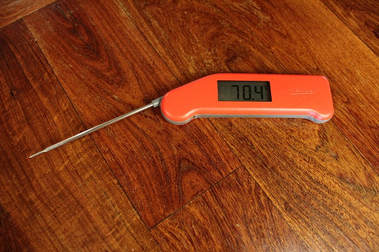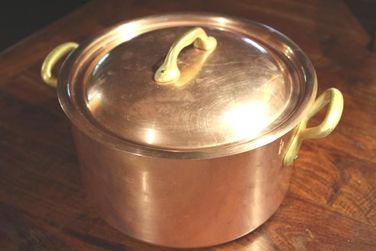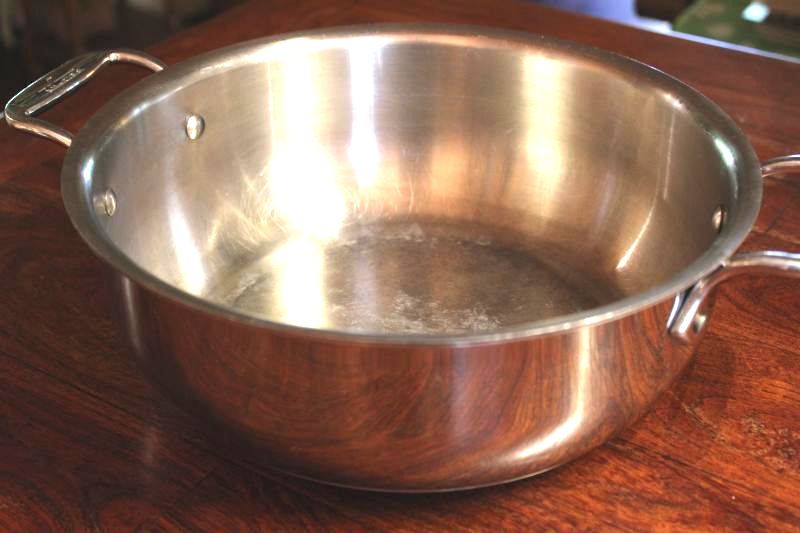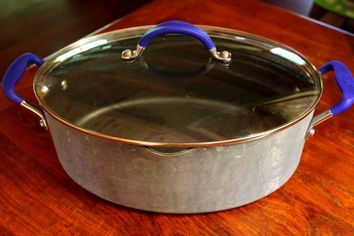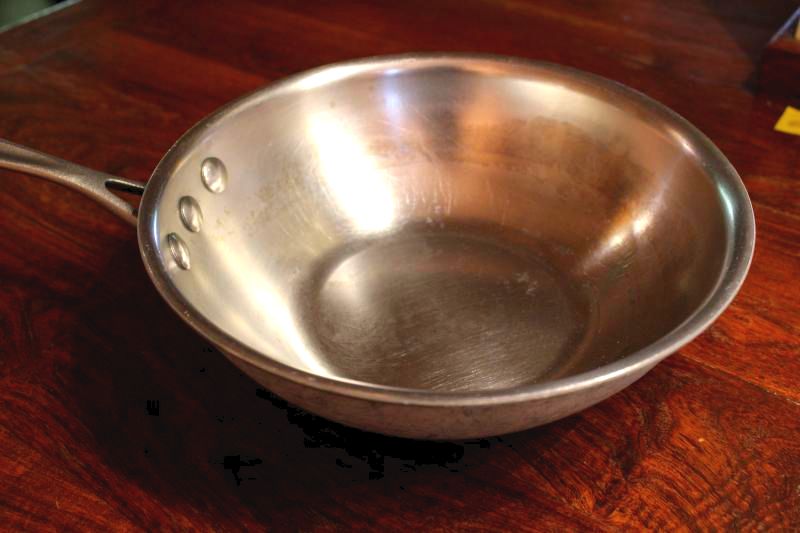Recipe: Rib Eye Steak, medium rare1 pound prime rib eye steak, 2 inches thick Salt, pepper, butter, one teaspoon sugar A few hours ahead of time, take the steak out of the refrigerator, salt heavily and wrap in a couple of paper towels. Let sit on a plate at room temperature. If the towels get too wet, change them. Heat oven to 350. Wipe the steaks dry (the towel will take most of the salt with it), put on pepper and a little more salt. Using a cookie sheet with a wire rack, place the steak in the middle so air can circulate underneath. Put a pat of butter on the top of the steak. Take temperature before putting steak in oven. After ten minutes, start checking the steak at 5 minute intervals. Put a little butter on top each time you check. Place a large cast-iron skillet on stove. When steak is between 120-130 degrees remove from oven and let sit. Heat the skillet until it makes a small amount of butter sizzle. Sprinkle half of the sugar on top of the steak, with tongs place steak sugar side down on the skillet. Sprinkle rest of sugar on the other side. The sugar will carmelize and make for a nice, brown, quick sear, which will only will be about 20 seconds for each side. You baked your steak! Now, butter it again, let it rest for ten minutes with foil tent. With a sharp knife, slice the steaks into about eight slices, and notice how beautifully pink it is. You may never grill a steak again. I learned to make steak this way from Cook’s Illustrated. This is very good with my Mushroom sauce recipe
1 Comment
It goes without saying that I love my 12 inch cast iron skillet, and I bet you love yours, so I didn’t bother to post a picture. One new thing I do with this skillet is preheat it in the oven for searing meat—at least I do this in the winter when I don’t mind heating up the kitchen. Heat your empty skillet in a 4-500 degree oven for fifteen minutes and remove it (oven mitts) to the working cooktop to sear a steak. Cast iron stays hot longer than other cookware, but it has “cool spots” because it does not conduct heat quickly. You’ll notice this when cooking pancakes; one side gets done faster than the other. Preheating it will make it cook more evenly.
|
Author:
|
|
I live out in the middle of nowhere in Oconee Country, beside the Little River. There are no restaurants close by, so for twenty years my family eats what I cook! I’ve developed a lot of tricks, formed strong opinions, and cultivated many “favorites” in an adventurous family kitchen.
|
|
|
#OconeeBellStudios
|
|
|
|
|
|
Sort by
Categories
|
|
Archives
June 2018
March 2018
January 2018
December 2017
October 2017
September 2017
August 2017
|
|

